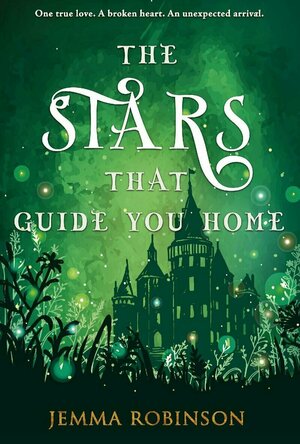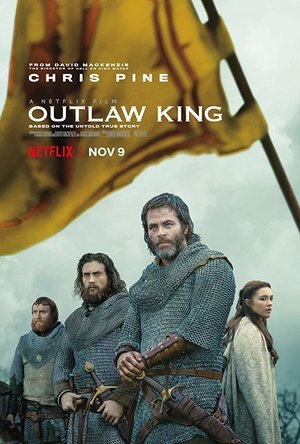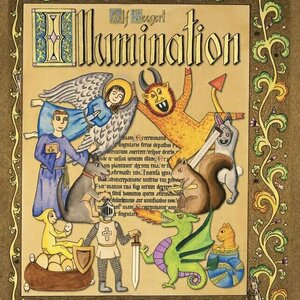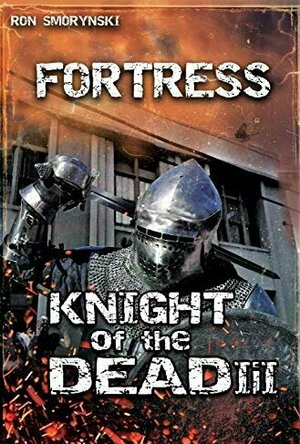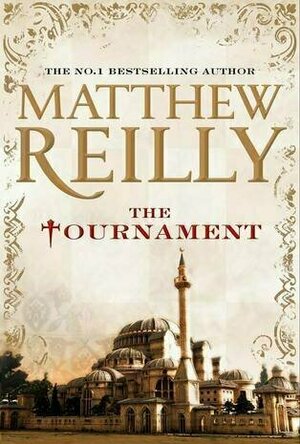Search
Search results
Lottie disney bookworm (1056 KP) rated The Stars That Guide You Home in Books
Oct 25, 2021
Wow.
Just…wow.
Now I make no secret of the fact that I am a crier. Christmas TV ads, airport arrivals halls, old men crying, anything has the ability to set me off blubbing! So I am never entirely surprised when I start crying at a book, even my husband doesn’t mock me anymore. But this book? THIS BOOK had me crying the entire way through and just when you thought life for the characters couldn’t get any worse…Jemma Robinson says hold my coat!
Sophia and Tom live in a quaint little farmhouse in the town of Lowshore. Their life is a simple one but their happy marriage practically radiates from the page. However, Sophia never told her husband about her past and that past is about to catch up with her!
Whilst Tom is at work, Sophia is kidnapped from her happy home and forced to live the life that she tried so desperately to escape. Beaten, abused and powerless, Sophia manages to find two people worthy of her trust but will she ever escape? Can she ever regain the life that she used to have with Tom?
The beauty of this book is that it revolves around its characters. There is very little world building here but, honestly, it isn’t needed. Nothing matters to Tom and Sophia except one-another and that is reflected in Jemma Robinson’s writing style.
The characters themselves stay with you long after the final page: Sophia wears her heart on her sleeve, Tom is steadfast and passionately protective, James and Annalise are, in contrast, calm and collected individuals but Edmund is nothing short of a psychopath!
Edmund is no fairytale villain, despite the Lord Farquaad vibes I was getting from him. Robinson’s antagonist wouldn’t be out of place in Game of Thrones: he is truly revolting, controlling and revels in his absolute power over everything and everyone in his kingdom.
The Stars That Guide You Home is marketed as historical romance, not a fairytale, and with its medicine, photographs and labour camps then it does seem too modern to be considered a fairytale. However, I would argue that castles, arranged marriages, medieval torture and absence of any morally grey characters could push this into the category of dark fairytale.
There are a number of trigger warnings within this novel that I want to highlight. This is by no means a YA book – it is definitely Adult Fiction or New Adult at a push. These trigger warnings include rape, physical and mental abuse, animal cruelty, torture (in detail), kidnap, burns, suicide, miscarriage and general violence.
Dark fairytale still doesn’t seem enough… Sinister fairytale might just do it!
The Stars That Guide You Home is simultaneously beautiful, horrifying and inspiring. This book will break your heart over and over again and keep you coming back for more. Thank you to The Book Network for the opportunity to review this amazing novel, and thank you to Jemma, even though you did make me cry for 486 pages!
Just…wow.
Now I make no secret of the fact that I am a crier. Christmas TV ads, airport arrivals halls, old men crying, anything has the ability to set me off blubbing! So I am never entirely surprised when I start crying at a book, even my husband doesn’t mock me anymore. But this book? THIS BOOK had me crying the entire way through and just when you thought life for the characters couldn’t get any worse…Jemma Robinson says hold my coat!
Sophia and Tom live in a quaint little farmhouse in the town of Lowshore. Their life is a simple one but their happy marriage practically radiates from the page. However, Sophia never told her husband about her past and that past is about to catch up with her!
Whilst Tom is at work, Sophia is kidnapped from her happy home and forced to live the life that she tried so desperately to escape. Beaten, abused and powerless, Sophia manages to find two people worthy of her trust but will she ever escape? Can she ever regain the life that she used to have with Tom?
The beauty of this book is that it revolves around its characters. There is very little world building here but, honestly, it isn’t needed. Nothing matters to Tom and Sophia except one-another and that is reflected in Jemma Robinson’s writing style.
The characters themselves stay with you long after the final page: Sophia wears her heart on her sleeve, Tom is steadfast and passionately protective, James and Annalise are, in contrast, calm and collected individuals but Edmund is nothing short of a psychopath!
Edmund is no fairytale villain, despite the Lord Farquaad vibes I was getting from him. Robinson’s antagonist wouldn’t be out of place in Game of Thrones: he is truly revolting, controlling and revels in his absolute power over everything and everyone in his kingdom.
The Stars That Guide You Home is marketed as historical romance, not a fairytale, and with its medicine, photographs and labour camps then it does seem too modern to be considered a fairytale. However, I would argue that castles, arranged marriages, medieval torture and absence of any morally grey characters could push this into the category of dark fairytale.
There are a number of trigger warnings within this novel that I want to highlight. This is by no means a YA book – it is definitely Adult Fiction or New Adult at a push. These trigger warnings include rape, physical and mental abuse, animal cruelty, torture (in detail), kidnap, burns, suicide, miscarriage and general violence.
Dark fairytale still doesn’t seem enough… Sinister fairytale might just do it!
The Stars That Guide You Home is simultaneously beautiful, horrifying and inspiring. This book will break your heart over and over again and keep you coming back for more. Thank you to The Book Network for the opportunity to review this amazing novel, and thank you to Jemma, even though you did make me cry for 486 pages!
Gareth von Kallenbach (980 KP) rated Outlaw King (2018) in Movies
Jul 2, 2019
After more than eight years of war with King Edward I of England (Stephen Dillane) the Scottish Nobles swear allegiance to the crown, ending the brutal. This includes Robert Bruce (Chris Pine) who is one of two men in line to be King of Scots. But by pledging his loyalty to they agree to be under the supervision of the Earl of Pembroke, Aymer de Valence (Sam Spruell). Robert’s father, Robert Bruce Senior (James Cosmo), had pushed for the peace with England but when he dies and the younger Robert is in charge a new fight for independence seems eminent. When the last remaining outlaw, William Wallace, is killed by the English Robert knows the time to fight is now. He decides to meet with his rival for the crown, John Comyn (Callan Mulvey), to have a united Scotland fighting for freedom. When Comyn denies Robert’s request and tells him he will use the information to be named King by Edward I, Robert kills him. This proves costly as it divides the Scottish Lords. Robert is determined and will take a small group loyal to him and fight one of the largest and most feared armies in the world.
This film is based on historical events and follows Robert the Bruce in his guerilla warfare battle for independence against the English. The film definitely seemed to take some poetic license with the story, but overall it feels realistic. Set in the medieval Scotland this is both a gritty and beautifully shot film. The wide shots show the beautiful country and coasts of Scotland. Then the day to day life and the battle scenes are dirty and grimy. The film is a brutal as advertised not only in the battle scenes but also throughout the film. Director David Mackenzie (Hell or High Water, Starred Up) crafts a well thought out story that moves briskly along. I had a couple of issues with the CGI not being super realistic. One brutal scene where someone drawn and quartered, I’ll let you research that, and the body looks like a blob rather than a torso. There were also some awkward cut scenes that didn’t make sense to me. Really not making sense. The opening sequence of the film is done in one shot and might be one of the most impressively shot sequences I have seen in a movie in a long time. The performances are also really good. Billy Howie, Prince of Wales, is a good antagonist and Aaron Taylor-Johnson, James Douglas, is a marvelous madman protector of the Robert the Bruce.
I enjoyed this movie in the theater and think a Netflix view is going to be perfect. It is brutal so the faint of heart should be prepared to look away multiple times. It may get compared to another famous Scottish film from not too long ago and I think this is a nice update. But this is not that film, both in good and bad ways. I enjoyed my watching experience and will definitely catch it streaming on its release date.
This film is based on historical events and follows Robert the Bruce in his guerilla warfare battle for independence against the English. The film definitely seemed to take some poetic license with the story, but overall it feels realistic. Set in the medieval Scotland this is both a gritty and beautifully shot film. The wide shots show the beautiful country and coasts of Scotland. Then the day to day life and the battle scenes are dirty and grimy. The film is a brutal as advertised not only in the battle scenes but also throughout the film. Director David Mackenzie (Hell or High Water, Starred Up) crafts a well thought out story that moves briskly along. I had a couple of issues with the CGI not being super realistic. One brutal scene where someone drawn and quartered, I’ll let you research that, and the body looks like a blob rather than a torso. There were also some awkward cut scenes that didn’t make sense to me. Really not making sense. The opening sequence of the film is done in one shot and might be one of the most impressively shot sequences I have seen in a movie in a long time. The performances are also really good. Billy Howie, Prince of Wales, is a good antagonist and Aaron Taylor-Johnson, James Douglas, is a marvelous madman protector of the Robert the Bruce.
I enjoyed this movie in the theater and think a Netflix view is going to be perfect. It is brutal so the faint of heart should be prepared to look away multiple times. It may get compared to another famous Scottish film from not too long ago and I think this is a nice update. But this is not that film, both in good and bad ways. I enjoyed my watching experience and will definitely catch it streaming on its release date.
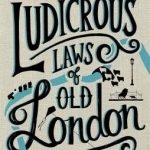
The Ludicrous Laws of Old London
Book
London abounds with all manner of ludicrous laws, and not all of these curious statutes have been...

World of Cubes Survival Craft
Games and Entertainment
App
Create your own worlds with thousands of random players or friends online in Multiplayer mode or...
Taryn K (444 KP) rated Otherworldly Izakaya Nobu Volume 2 (manga) in Books
May 15, 2022 (Updated May 15, 2022)
The characters are well written (1 more)
The world is beginning to expand.
Another quiet slice-of-life night at Izakaya Nobu
Much like volume 1, volume 2 of Otherworldly Izakaya Nobu takes us to the pub that sits between modern Japan and the rather medieval city of Aitheria. Again, we have Japanese, German, and English food terms going on, which keeps life interesting, but the explanations are handy, so there is minimal chance of confusion.
The book starts off with one of the soldiers from volume 1, Hans, stopping by the pub after training only to find out it's 'Kisu Day'. Hans is surprised to see Chef Nobu deep frying the tempura-battered fish and putting it on paper, which is a very expensive commodity in Aitheria. The little details really make this series special, I think.
In chapter 2, "Thief", we meet a new helper, a young girl trying to help out her family, named Effa. There is a bit of confusion, but we get to meet the new deacon in town, who has already become a regular.
Chapter 3, "An Uninvited Guest", Chef Nobu learns a 'new' recipe, and we are reminded that Shinobu can cook as well. A pompous little man and his gourmet aristocrat boss stop by in search of the Ankake Yudofu that pleased the bride-to-be in volume 1, as she praised it at her wedding. Each chapter builds ties to other people or builds ties between Shinobu/Chef and the regulars, which Is another thing I love. Ankake Yudofu is out of season, as it is no longer winter, so schnitzel is apparently just the ticket, if Chef just knew what it is.
Chapter 4, "Quarreling Craftsmen", sees two new characters introduced. Holga, a glassmaker who heard about Izakaya Nobu from the tax collector Gehrnot, who enjoyed the 'Spaghetti Napolitan' in volume 1, and Han's father, a woodworker named Laurenz. They spend most of the chapter arguing and trying each other's dishes, but it is a friendly rivalry that gets settled down by a surprising person.
Chapter 5, "The Commander's Weakness", is hilarious due to more puns on squid than I ever thought could be made, but Commander Bertholdt has to conquer his fear of squid before his arranged marriage to the daughter of a fisherman. Such a good chapter. One of my favorites. "He squidn't!"
Chapter 6, "Effa in Wonderland", sees Effa going through the back door of the pub into modern Japan. Not much cooking in this chapter, but we find out a little more about how the pub ended up being in two places at once. Thankfully, she gets back to Aitheria safe and sound.
I'm not completely sure about this being a review as much as a rundown of what happens. It's just a feel-good series, with just a hair of drama, but nothing that can't be resolved in a chapter or perhaps two. The characters are likeable, for the most part, and those who aren't are meant to be unlikeable. The interpersonal relationships are fun to see revealed. Definitely a good pre-bed book. 😊
The book starts off with one of the soldiers from volume 1, Hans, stopping by the pub after training only to find out it's 'Kisu Day'. Hans is surprised to see Chef Nobu deep frying the tempura-battered fish and putting it on paper, which is a very expensive commodity in Aitheria. The little details really make this series special, I think.
In chapter 2, "Thief", we meet a new helper, a young girl trying to help out her family, named Effa. There is a bit of confusion, but we get to meet the new deacon in town, who has already become a regular.
Chapter 3, "An Uninvited Guest", Chef Nobu learns a 'new' recipe, and we are reminded that Shinobu can cook as well. A pompous little man and his gourmet aristocrat boss stop by in search of the Ankake Yudofu that pleased the bride-to-be in volume 1, as she praised it at her wedding. Each chapter builds ties to other people or builds ties between Shinobu/Chef and the regulars, which Is another thing I love. Ankake Yudofu is out of season, as it is no longer winter, so schnitzel is apparently just the ticket, if Chef just knew what it is.
Chapter 4, "Quarreling Craftsmen", sees two new characters introduced. Holga, a glassmaker who heard about Izakaya Nobu from the tax collector Gehrnot, who enjoyed the 'Spaghetti Napolitan' in volume 1, and Han's father, a woodworker named Laurenz. They spend most of the chapter arguing and trying each other's dishes, but it is a friendly rivalry that gets settled down by a surprising person.
Chapter 5, "The Commander's Weakness", is hilarious due to more puns on squid than I ever thought could be made, but Commander Bertholdt has to conquer his fear of squid before his arranged marriage to the daughter of a fisherman. Such a good chapter. One of my favorites. "He squidn't!"
Chapter 6, "Effa in Wonderland", sees Effa going through the back door of the pub into modern Japan. Not much cooking in this chapter, but we find out a little more about how the pub ended up being in two places at once. Thankfully, she gets back to Aitheria safe and sound.
I'm not completely sure about this being a review as much as a rundown of what happens. It's just a feel-good series, with just a hair of drama, but nothing that can't be resolved in a chapter or perhaps two. The characters are likeable, for the most part, and those who aren't are meant to be unlikeable. The interpersonal relationships are fun to see revealed. Definitely a good pre-bed book. 😊
Purple Phoenix Games (2266 KP) rated Illumination in Tabletop Games
Oct 5, 2021
Ancient Medieval books. We all love ’em, right? Full of bright beautiful pictures of angels fighting demons, knights fighting dragons, dogs fighting squirrels(?), and monks fighting armed bunnies?? Hey, what’s going on here? Okay, I have played enough Alf Seegert games to know that everything comes with a hint of quirk, but now I need to pore through my non-existent collection of old tomes to find instances of monks warding off sword-brandishing rabbits. Ohhhhh, maybe this is about children’s books! Man, times were weird back in the day.
Illumination is a game about two monks who are tasked with illuminating the pages of manuscripts with drawings in the hopes of becoming the next head of the Scriptorium: The Scriptmaster, one might say. However, one of the monks gets a little itch and begins to draw irreverent subjects, like demons, dragons, and such. Which monk will earn the made-up-by-me title of Scriptmaster? Guess you will have to play to find out.
DISCLAIMER: We were provided a copy of this game for the purposes of this review. This is a retail copy of the game, so what you see in these photos is exactly what would be received in your box. I do not intend to cover every single rule included in the rulebook, but will describe the overall game flow and major rule set so that our readers may get a sense of how the game plays. For more in depth rules, you may purchase a copy online or from your FLGS. -T
As with many games that are well endowed with components, setup can be a bit of a task. The game will be focused around a few main areas. First, the three manuscript pages are placed on the table in any orientation, with the purple wild Drollery tiles placed on one text box on each page. The Monastery mat is placed nearby as well, with the Abbot pawn randomly placed on a blank station. This pawn will be moved around the map during play to determine which rituals may be performed at any one time. Each player will have their own player mat, upon which will be placed their starting gold (1 for the Reverent player and 5 for the Irreverent player), as well as their starting nine Illumination tiles. The rules mention separating all the Illumination tiles into stacks of three, choosing three of these stacks to flip over and place on the play mat without altering the order. This is very important to keep the tiles in their randomized order. The remainder of the tiles are to be placed nearby in stacks of three. Each player is dealt one starting Scriptorium card and a random Crusade card that will offer bonuses at the end of the game. Once all setup, the game may begin with the Reverent player’s turn.
On a turn, the active player will choose from their mat one row or column of three tiles to be played. They take the three tiles and place them upon one of the three book pages on the table, in the margins. From there the player can choose any tile from the margin to place onto the page in any order they wish, upon any quill icon they choose (except for coin tiles – those simply grant two coins immediately). If the tile is placed on a quill of a matching color to that of the tile, the player will immediately collect one coin and place it on the player mat. If the tile is placed on a quill and orthogonally touches a tile of the matching color, the player then collects a Ritual token of the same color. These Ritual tokens are used in sets of three, four, or five in order to earn VP for end of game scoring. Each purple Drollery tile is wild for the purpose of placement and Ritual token collection. Each tile placed will collect its earnings immediately, and any coins earned may be spent immediately as well.
A player may use coins for several purposes throughout the game: move a tile from the margin of one book to the margin of a different book, move the Abbot one space along the track for Ritual purposes, or to draw a Scriptorium card. The other resources are Ritual tokens, and may be spent during the turn as well. In order to spend these, the Abbot must be on the matching location on the Monastery board, and the player may spend three, four, or five matching tokens to perform the Ritual. They discard the tokens, place one of their cubes upon the appropriate icon on the Monastery mat for VP at game end.
At any time during the turn Scriptorium cards may be played. These are very special cards that allow the player to complete certain actions that break the normal rules. This could be a free movement of the Abbot, or switching places of two tiles on the player mat, or even banishing one of the opponent’s tiles to another book entirely.
Why mention the battles in the intro if they are not part of the game? They are. Once opposing foes are placed orthogonally from each other, and all involved tiles are completely enclosed by other tiles or board obstacles, a Bounded Battle will begin. Battles are simple to resolve as it requires players to count the number of combatants on both sides and whichever side has more forces wins the battle. The winner places their cube on the appropriate battle card near the Monastery mat, and the loser gains coins equal to the number of their tiles lost to battle. Tiles that are lost are simply flipped to its opposite side.
Play continues in this fashion of players choosing and placing tiles, drawing and using Scriptorium cards, performing Rituals, and resolving Bounded Battles until both players pass their turn. The game is then over and VP counted in all their places around the play area. The player with the most points becomes the next Scriptmaster Flex and is able to enhance or defile as many manuscripts as they like!
Components. This game has a lot of components, but they are mostly cardboard tiles, cardstock cards and mats, and wooden cubes. The quality is all very fine, as to be expected with Eagle-Gryphon games. The art, for me, is the biggest drawback of the game. I UNDERSTAND why it looks the way it does – in trying to stick with a Medieval manuscript theme some decision were made on the style. It just doesn’t vibe with me. I took a look at the new edition of The Road to Canterbury, by the same designer and publisher, and loved the look of it. I REALIZE that the tiles are supposed to be not only reminiscent of the art style of that time period, but also imaginations of monks and their doodles, but it’s just not for me. I do like the looks of everything else except the art on the tiles, and when that’s the majority of the components I am looking at, I sigh a little. I am absolutely no artist, and I can acknowledge that the art presented is very good and in line with the theme. Oh well.
The game play is very solid, and I do like it quite a bit. Everything makes a lot of sense as to why you are doing the actions, and the most difficult thing to comprehend the first time through is the Bounded Battles. You see, battles don’t immediately happen when you pit one foe against another. In fact, all tiles engaged need to be surrounded by other tiles or battleground obstacles before battle can begin. This allows both sides to add more tiles to help sway the balance of power, and can get a little confusing for some players. Not ME, of course, but SOME players (ok it was totally me the first time through). I am thankful that resolving the battles are pretty simple, and winning battles gives the victor a cool five points.
Other aspects I really enjoy are the Scriptorium cards and the Rituals. Again, the Scriptorium cards can be drawn for two coins during the game and can provide excellent rule-breaking choices to the players. Any time a game has cards that bend the rules, I generally am a fan. The Rituals are merely tokens that are collected and then turned in for points. This doesn’t necessarily sound that interesting until I reveal that a player board only has space for seven items: Ritual tokens AND coins included. So a player may be stacking up coins, and not have space for Ritual tokens or vice versa. Hard choices need to be made sometimes, but to help with that Ritual tokens can also be used like a coin, but not the other way around. So there is no buying Ritual tokens. Having that restriction of seven items on hand is a really nice touch, and makes each turn important.
So all in all I enjoyed my plays of Illumination. I have yet to try the solo version that is included, but I will soon. I feel that of the two Medieval series games I have played I prefer The Road to Canterbury, but I do like the different feel of Illumination. Having a solo mode is also very attractive to me because my wife and I do not always have matching schedules where we can game together. I like Illumination for the actual gameplay, but the art is a turn-off for me. Purple Phoenix Games gives this one an irreverent 4 / 6. If you are looking for something a little different that features some interesting game play, tons of choices, yet is restrictive as well, take a look at Illumination. Try not to complete too many wine and candle rituals though. Those two things don’t mix very well in my experience.
Illumination is a game about two monks who are tasked with illuminating the pages of manuscripts with drawings in the hopes of becoming the next head of the Scriptorium: The Scriptmaster, one might say. However, one of the monks gets a little itch and begins to draw irreverent subjects, like demons, dragons, and such. Which monk will earn the made-up-by-me title of Scriptmaster? Guess you will have to play to find out.
DISCLAIMER: We were provided a copy of this game for the purposes of this review. This is a retail copy of the game, so what you see in these photos is exactly what would be received in your box. I do not intend to cover every single rule included in the rulebook, but will describe the overall game flow and major rule set so that our readers may get a sense of how the game plays. For more in depth rules, you may purchase a copy online or from your FLGS. -T
As with many games that are well endowed with components, setup can be a bit of a task. The game will be focused around a few main areas. First, the three manuscript pages are placed on the table in any orientation, with the purple wild Drollery tiles placed on one text box on each page. The Monastery mat is placed nearby as well, with the Abbot pawn randomly placed on a blank station. This pawn will be moved around the map during play to determine which rituals may be performed at any one time. Each player will have their own player mat, upon which will be placed their starting gold (1 for the Reverent player and 5 for the Irreverent player), as well as their starting nine Illumination tiles. The rules mention separating all the Illumination tiles into stacks of three, choosing three of these stacks to flip over and place on the play mat without altering the order. This is very important to keep the tiles in their randomized order. The remainder of the tiles are to be placed nearby in stacks of three. Each player is dealt one starting Scriptorium card and a random Crusade card that will offer bonuses at the end of the game. Once all setup, the game may begin with the Reverent player’s turn.
On a turn, the active player will choose from their mat one row or column of three tiles to be played. They take the three tiles and place them upon one of the three book pages on the table, in the margins. From there the player can choose any tile from the margin to place onto the page in any order they wish, upon any quill icon they choose (except for coin tiles – those simply grant two coins immediately). If the tile is placed on a quill of a matching color to that of the tile, the player will immediately collect one coin and place it on the player mat. If the tile is placed on a quill and orthogonally touches a tile of the matching color, the player then collects a Ritual token of the same color. These Ritual tokens are used in sets of three, four, or five in order to earn VP for end of game scoring. Each purple Drollery tile is wild for the purpose of placement and Ritual token collection. Each tile placed will collect its earnings immediately, and any coins earned may be spent immediately as well.
A player may use coins for several purposes throughout the game: move a tile from the margin of one book to the margin of a different book, move the Abbot one space along the track for Ritual purposes, or to draw a Scriptorium card. The other resources are Ritual tokens, and may be spent during the turn as well. In order to spend these, the Abbot must be on the matching location on the Monastery board, and the player may spend three, four, or five matching tokens to perform the Ritual. They discard the tokens, place one of their cubes upon the appropriate icon on the Monastery mat for VP at game end.
At any time during the turn Scriptorium cards may be played. These are very special cards that allow the player to complete certain actions that break the normal rules. This could be a free movement of the Abbot, or switching places of two tiles on the player mat, or even banishing one of the opponent’s tiles to another book entirely.
Why mention the battles in the intro if they are not part of the game? They are. Once opposing foes are placed orthogonally from each other, and all involved tiles are completely enclosed by other tiles or board obstacles, a Bounded Battle will begin. Battles are simple to resolve as it requires players to count the number of combatants on both sides and whichever side has more forces wins the battle. The winner places their cube on the appropriate battle card near the Monastery mat, and the loser gains coins equal to the number of their tiles lost to battle. Tiles that are lost are simply flipped to its opposite side.
Play continues in this fashion of players choosing and placing tiles, drawing and using Scriptorium cards, performing Rituals, and resolving Bounded Battles until both players pass their turn. The game is then over and VP counted in all their places around the play area. The player with the most points becomes the next Scriptmaster Flex and is able to enhance or defile as many manuscripts as they like!
Components. This game has a lot of components, but they are mostly cardboard tiles, cardstock cards and mats, and wooden cubes. The quality is all very fine, as to be expected with Eagle-Gryphon games. The art, for me, is the biggest drawback of the game. I UNDERSTAND why it looks the way it does – in trying to stick with a Medieval manuscript theme some decision were made on the style. It just doesn’t vibe with me. I took a look at the new edition of The Road to Canterbury, by the same designer and publisher, and loved the look of it. I REALIZE that the tiles are supposed to be not only reminiscent of the art style of that time period, but also imaginations of monks and their doodles, but it’s just not for me. I do like the looks of everything else except the art on the tiles, and when that’s the majority of the components I am looking at, I sigh a little. I am absolutely no artist, and I can acknowledge that the art presented is very good and in line with the theme. Oh well.
The game play is very solid, and I do like it quite a bit. Everything makes a lot of sense as to why you are doing the actions, and the most difficult thing to comprehend the first time through is the Bounded Battles. You see, battles don’t immediately happen when you pit one foe against another. In fact, all tiles engaged need to be surrounded by other tiles or battleground obstacles before battle can begin. This allows both sides to add more tiles to help sway the balance of power, and can get a little confusing for some players. Not ME, of course, but SOME players (ok it was totally me the first time through). I am thankful that resolving the battles are pretty simple, and winning battles gives the victor a cool five points.
Other aspects I really enjoy are the Scriptorium cards and the Rituals. Again, the Scriptorium cards can be drawn for two coins during the game and can provide excellent rule-breaking choices to the players. Any time a game has cards that bend the rules, I generally am a fan. The Rituals are merely tokens that are collected and then turned in for points. This doesn’t necessarily sound that interesting until I reveal that a player board only has space for seven items: Ritual tokens AND coins included. So a player may be stacking up coins, and not have space for Ritual tokens or vice versa. Hard choices need to be made sometimes, but to help with that Ritual tokens can also be used like a coin, but not the other way around. So there is no buying Ritual tokens. Having that restriction of seven items on hand is a really nice touch, and makes each turn important.
So all in all I enjoyed my plays of Illumination. I have yet to try the solo version that is included, but I will soon. I feel that of the two Medieval series games I have played I prefer The Road to Canterbury, but I do like the different feel of Illumination. Having a solo mode is also very attractive to me because my wife and I do not always have matching schedules where we can game together. I like Illumination for the actual gameplay, but the art is a turn-off for me. Purple Phoenix Games gives this one an irreverent 4 / 6. If you are looking for something a little different that features some interesting game play, tons of choices, yet is restrictive as well, take a look at Illumination. Try not to complete too many wine and candle rituals though. Those two things don’t mix very well in my experience.
EmersonRose (320 KP) rated Knight of The Dead III: Fortress in Books
Nov 20, 2019
Knight of the Dead III: Fortress continues the adventures of Ronan and his family as they struggle to survive in the Zombie Apocalypse. The third book is a non-stop action-packed adventure as Ronan really starts to build up his fortress in a school building, slowly growing his kingdom. He has finally saved enough people that there really starts to be some interesting dynamics between the survivors and a look to the future can begin to happen. In this book, the stakes are raised as the zombies continue to change and seemingly become smarter and more dangerous. With the stakes raised, his family finally in a stable situation, Ronan sets out full force to save as many others as he can.
Without a doubt, my favorite part if this series is the unique take at apocalypse fiction by throwing in medieval fighting. This book does not disappoint as there are thrilling action scenes, plenty of training sequences, and the knight continuing to become a legend in the modern world. This unique touch simultaneously gives the story a fun and engaging layer while also somehow adding to the believability of the world that author Ron Smorynski has created. With the detailed fighting knowledge, and the time spent on gathering food, training, getting water, and fortifying the school, as a reader you can believe that they would have survived this long.518hheXuwoL._SY346_
This book focuses more on rescue then the previous books and as the cast of characters continues to grow there is less time spent one on one with people. This decreases the amount of individual tension between characters, but there is still tension as Ronan is the dictator and continues to push his Christian values on everyone within his fortress. This dynamic makes sense in the situation, but I like the moments when Ronan gets to be humanized more in small moments. A hug with his wife or children, a cute moment with him and the children, his appreciated a moment of laughter. These moments are very sweet in the otherwise horror-filled world they live in, and Ronan gets to relax the least as a leader.
Pet peeve of mine in apocalypse fiction is the idea that you are completely alone in the world. That although you survived no one else on the planet could have. Smorynski does not fall into this trap. He acknowledges the bigger world, although his characters have very little contact with it. And there is a good balance between the characters feeling alone and being alone. Many people have died in the month of the apocalypse, but they are still finding survivors. There are other people who are holding on. This makes the series more exciting for me and also keeps me excited for the books to come as I enjoy watching the growing community of survivors.
This series is exciting and gripping from beginning to end. Smorynski does a good job of justifying the risks that his characters take and ups the stakes and consequences as the book progresses, making the danger feel read from beginning to end. If you like zombie stories or apocalypse fiction, then I would highly recommend checking this series out. I cannot wait to see where the story goes from here!
Without a doubt, my favorite part if this series is the unique take at apocalypse fiction by throwing in medieval fighting. This book does not disappoint as there are thrilling action scenes, plenty of training sequences, and the knight continuing to become a legend in the modern world. This unique touch simultaneously gives the story a fun and engaging layer while also somehow adding to the believability of the world that author Ron Smorynski has created. With the detailed fighting knowledge, and the time spent on gathering food, training, getting water, and fortifying the school, as a reader you can believe that they would have survived this long.518hheXuwoL._SY346_
This book focuses more on rescue then the previous books and as the cast of characters continues to grow there is less time spent one on one with people. This decreases the amount of individual tension between characters, but there is still tension as Ronan is the dictator and continues to push his Christian values on everyone within his fortress. This dynamic makes sense in the situation, but I like the moments when Ronan gets to be humanized more in small moments. A hug with his wife or children, a cute moment with him and the children, his appreciated a moment of laughter. These moments are very sweet in the otherwise horror-filled world they live in, and Ronan gets to relax the least as a leader.
Pet peeve of mine in apocalypse fiction is the idea that you are completely alone in the world. That although you survived no one else on the planet could have. Smorynski does not fall into this trap. He acknowledges the bigger world, although his characters have very little contact with it. And there is a good balance between the characters feeling alone and being alone. Many people have died in the month of the apocalypse, but they are still finding survivors. There are other people who are holding on. This makes the series more exciting for me and also keeps me excited for the books to come as I enjoy watching the growing community of survivors.
This series is exciting and gripping from beginning to end. Smorynski does a good job of justifying the risks that his characters take and ups the stakes and consequences as the book progresses, making the danger feel read from beginning to end. If you like zombie stories or apocalypse fiction, then I would highly recommend checking this series out. I cannot wait to see where the story goes from here!
Phil Leader (619 KP) rated The Tournament in Books
Nov 27, 2019
Australian author Matthew Reilly is known for his fast paced, edge of your seat, suspension of belief thrillers. This book is a considerable change from that, being a slower and more thoughtful tale of 16th century murder and intrigue.
Reilly's books, under the usual all-out action sequences, always convey a good plot and storyline and have strong characterisation. Here those are to the fore. The main players are a young Princess Elizabeth; daughter of King Henry VIII and soon to be Elizabeth I and her teacher, Roger Ascham. Sultan Sulieman the Magnificent has invited all the best chess players across Europe to play to decide which nation can claim to have the ultimate chess champions. Elizabeth and Roger accompany England's entrant both to avoid the black death but also because Ascham wants to give Elizabeth a wide education just in case she becomes queen.
After a few adventures on the way the party arrives, along with the representatives of the other nations. Court intrigue and politics abound and everyone has their own agenda. When there is a high profile murder, Sulieman requests the aid of Ascham - known for his insight and ability to resolve problems using logic - to find the culprit before there is an international scandal. As the bodies pile up, Ascham and young Elizabeth face dangerous and unknown enemies and uncover plots and dark secrets.
The medieval detective story is not entirely new for Reilly. Previous he has written a couple of short stories that are available for download from his website - www.mattewreilly.com - with this theme. Dead Prince concerns the death of the Dauphin in France and is investigated by the king's architect. Roger Ascham and the King's Missing Girl is a story that precedes The Tournament by a few months and effectively introduces Ascham and his skills as he tracks down a serial kidnapper and murderer in Cambridge.
Reilly acknowledges at the end of the book that he was influenced by works such as The Name of the Rose and indeed this has much of the same flavour. The plot is complex and has the chess match running through it (and indeed sections of the book are named after chess pieces). Everything is very well handled by Reilly and everything unravels nicely in the finale of the book.
This has also been well researched. With many real historical figures included (not only Elizabeth, Ascham and Sulieman but a supporting cast that includes Ivan the Terrible and Michelangelo) and the feel of all the descriptions is very authentic.
One aspect that has to be mentioned is that, since Reilly wanted to explore something that may have influenced Elizabeth in her future life, there are a fair number of events of a sexual nature that occur. Some of these have a direct bearing on the plot, others are so that Elizabeth can form opinions on sex and marriage. Reilly has printed a warning at the start of the book that this is not for younger readers, and I can fully endorse that.
I can imagine that a number of Reilly fans will not enjoy this book - the pace is slow and methodical rather than headlong and there are very few 'action' sequences to speak of. However I would recommend this book to anybody who likes historical detective style stories.
Reilly's books, under the usual all-out action sequences, always convey a good plot and storyline and have strong characterisation. Here those are to the fore. The main players are a young Princess Elizabeth; daughter of King Henry VIII and soon to be Elizabeth I and her teacher, Roger Ascham. Sultan Sulieman the Magnificent has invited all the best chess players across Europe to play to decide which nation can claim to have the ultimate chess champions. Elizabeth and Roger accompany England's entrant both to avoid the black death but also because Ascham wants to give Elizabeth a wide education just in case she becomes queen.
After a few adventures on the way the party arrives, along with the representatives of the other nations. Court intrigue and politics abound and everyone has their own agenda. When there is a high profile murder, Sulieman requests the aid of Ascham - known for his insight and ability to resolve problems using logic - to find the culprit before there is an international scandal. As the bodies pile up, Ascham and young Elizabeth face dangerous and unknown enemies and uncover plots and dark secrets.
The medieval detective story is not entirely new for Reilly. Previous he has written a couple of short stories that are available for download from his website - www.mattewreilly.com - with this theme. Dead Prince concerns the death of the Dauphin in France and is investigated by the king's architect. Roger Ascham and the King's Missing Girl is a story that precedes The Tournament by a few months and effectively introduces Ascham and his skills as he tracks down a serial kidnapper and murderer in Cambridge.
Reilly acknowledges at the end of the book that he was influenced by works such as The Name of the Rose and indeed this has much of the same flavour. The plot is complex and has the chess match running through it (and indeed sections of the book are named after chess pieces). Everything is very well handled by Reilly and everything unravels nicely in the finale of the book.
This has also been well researched. With many real historical figures included (not only Elizabeth, Ascham and Sulieman but a supporting cast that includes Ivan the Terrible and Michelangelo) and the feel of all the descriptions is very authentic.
One aspect that has to be mentioned is that, since Reilly wanted to explore something that may have influenced Elizabeth in her future life, there are a fair number of events of a sexual nature that occur. Some of these have a direct bearing on the plot, others are so that Elizabeth can form opinions on sex and marriage. Reilly has printed a warning at the start of the book that this is not for younger readers, and I can fully endorse that.
I can imagine that a number of Reilly fans will not enjoy this book - the pace is slow and methodical rather than headlong and there are very few 'action' sequences to speak of. However I would recommend this book to anybody who likes historical detective style stories.

Skateboard Party 3 Pro
Games and Sports
App
Skateboard Party is back! This third edition of the popular sports franchise features professional...
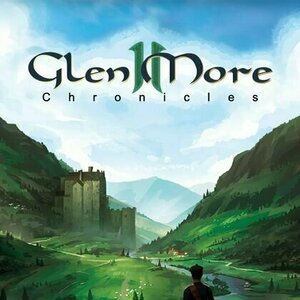
Glen More II: Chronicles
Tabletop Game
Glen More II: Chronicles is a sequel to Glen More, expanding the gameplay substantially compared to...
